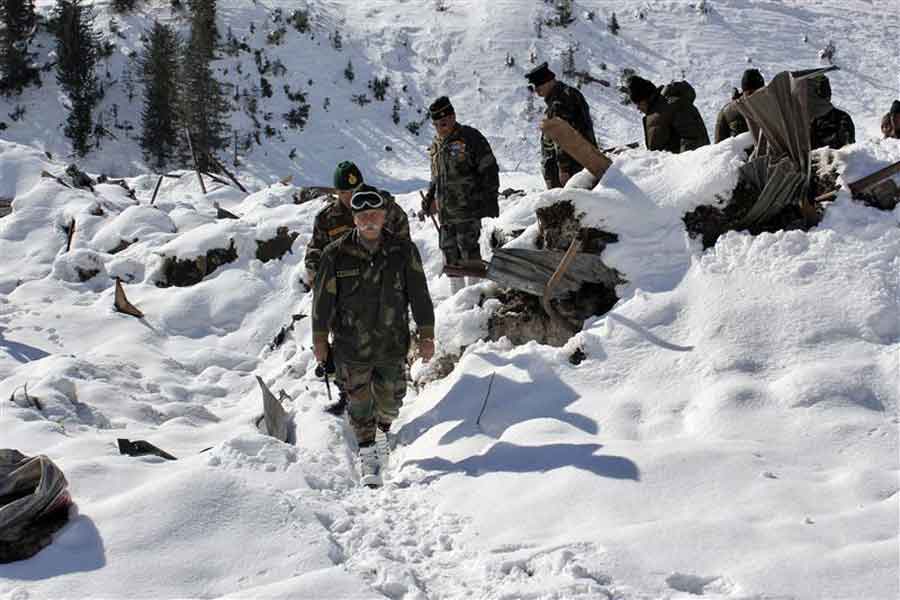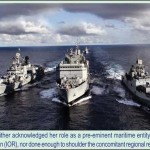 Two days back a defence correspondent wrote in a prominent daily that the Ministry of Defence (MoD) is apparently not in favour of a Permanent Chairman for the Chiefs of Staff Committee (COSC) and making him a member of the Cabinet Committee on Security (CCS), as has been recommended by the Naresh Chandra Committee. By MoD, the defence correspondent obviously meant the bureaucracy, which is not surprising. Today, the newspapers reports quote the Defence Minister in saying that the CCS is yet to discuss the issue. The recommendation of a Permanent Chairman of COSC was obviously meant to put the appointment of a Chief of Defence Staff (CDS) as recommended by the Kargil Review Committee in cold storage for next few years, if not decades. But the bureaucrats had foreseen and catered for that eventuality also. The official document under which Headquarters Integrated Defence Staff (IDS) was raised, says that as and when a CDS is appointed, he will have equal voting rights in all matters at par with the Service Chiefs and if two Service Chiefs disagree with the CDS the arbitrator will be MoD, latter implying the bureaucracy. The mere fact that such a clause had to be inserted by MoD bureaucrats implies they have debarred in perpetuity the CDS from being a single point advisor to the Defence Minister (read political authority). Obviously, the Permanent Chairman of COSC will be far less effective.
Two days back a defence correspondent wrote in a prominent daily that the Ministry of Defence (MoD) is apparently not in favour of a Permanent Chairman for the Chiefs of Staff Committee (COSC) and making him a member of the Cabinet Committee on Security (CCS), as has been recommended by the Naresh Chandra Committee. By MoD, the defence correspondent obviously meant the bureaucracy, which is not surprising. Today, the newspapers reports quote the Defence Minister in saying that the CCS is yet to discuss the issue. The recommendation of a Permanent Chairman of COSC was obviously meant to put the appointment of a Chief of Defence Staff (CDS) as recommended by the Kargil Review Committee in cold storage for next few years, if not decades. But the bureaucrats had foreseen and catered for that eventuality also. The official document under which Headquarters Integrated Defence Staff (IDS) was raised, says that as and when a CDS is appointed, he will have equal voting rights in all matters at par with the Service Chiefs and if two Service Chiefs disagree with the CDS the arbitrator will be MoD, latter implying the bureaucracy. The mere fact that such a clause had to be inserted by MoD bureaucrats implies they have debarred in perpetuity the CDS from being a single point advisor to the Defence Minister (read political authority). Obviously, the Permanent Chairman of COSC will be far less effective.
With comprehensive security getting more and more complex coupled with technological advances, the military will continue to be an important and critical element of national power.
There had been much talk of transformation of the military in India after the Kargil conflict. A dispassionate analysis, however, would indicate that ground level translation of the many recommendations for transformation has largely been cosmetic or at best marginal despite so many years having elapsed. Though George Fernandes, then Defence Minister had openly stated that he will ensure MoD is integrated with the Military in a given timeframe, bureaucratic maneuverings, as above, ensured this would not happen. HQ IDS came up as a separate HQ and continues to be so, without integrating with the MoD. Few years ago, the Air Force HQ decided to change its name to Integrated Headquarters of MoD (Air Force) – short form IHQ of MoD (Air Force). So, the other two Services HQ promptly followed suit which means no more than Bombay becoming Mumbai; fooling no one but ourselves.
At the national level, happenings over the past few decades should have radically altered our perceptions towards the nature of future conflict and enormity of threats and challenges that India faces, especially with the aggressive rise of China, Pakistani Military’s continued pathological hatred to India and China-Pakistan anti-India collusion. With comprehensive security getting more and more complex coupled with technological advances, the military will continue to be an important and critical element of national power. Emerging conflict scenarios in the geostrategic paradigm dictate that military jointness is an absolute must. Those who cite the IPKF experience as military synergy are fooling themselves. The fact is that in the present day context, military synergy in India is misnomer and at best confined within the four walls of HQ IDS. To that end, India must acknowledge that the Indian military establishment requires creative adaptation, fundamental changes and determinism to be able to respond effectively to the nation.
We do not appear to be making any effort to learn from the transformation of militaries in countries like the USA, UK, Germany and China. The same ambivalence relates to revamping the national security architecture. It may be pertinent to study foreign models and their experiences in unification of the Armed Forces and management of defence. The experience gained by them and the path adopted by them hold important lessons for us, which we can implement modulating their methods and policies to suit our requirements. In the post World War W II era there has been a general trend all over the world in integration of the Armed Forces and integration of Services HQ with the Defence Ministry / Department of Defence. The catalyst for strategic military transformations has invariably been visionaries at the national political apex that have provided the necessary impetus. In the US, Donald H Rumsfeld, Defense Secretary led the transformation by establishing US Joint Forces Command (JFC) as the transformation laboratory of the US Military to force the US Armed Forces into jointness and the Goldwater Nichols Act brought about revolutionary changes in the US Armed Forces, accelerating synergy and boosting transformation. In China, transformation of the PLA was ushered by Jiang Zemin himself and to-date its implementation and upgradation remains top priority for the Central Military Commission and Chief of General Staff of the PLA. In Germany the transformation process was initiated by the Berlin Decree and the German Chief of the Defence Forces is overseeing the transformation.
…besides bureaucratic stonewalling, the Service Chiefs themselves are the biggest hindrance to transformation and jointness.
The Indian Military requires organizational changes that are necessary to give an impetus to synergizing the Armed Forces towards integration and achieving unification. These changes have to be driven from the top political leadership of the country. To meet the challenge of transforming the Armed Forces, senior leaders and other agents of change must break the long tethers that bind the Armed Forces to the past and move it forward. To do so they must not only compel those within the Services to alter the way they think about their traditional roles and branch missions, but also win support from the people and the nation’s political leaders in their efforts to change the Armed Forces. There is no doubt that factors like previous historical experience, a naturally conservative outlook towards change, inability to evaluate new ideas adequately and a desire by some within the organization to preserve the status quo for fear of losing either personal or professional power or prestige within the organization would pose resistance in making meaningful changes but these will need to be overcome.
It goes without saying that besides bureaucratic stonewalling, the Service Chiefs themselves are the biggest hindrance to transformation and jointness. A former Army Chief who was a vocal proponent for immediate appointment of a CDS with ‘full operational powers’ while in service did an about face just prior to superannuation by saying that we should not go for a CDS till the time we do not sort out our insurgencies, as if the two are related. Ironically, the same former COAS had stated during a Unified Commanders Conference, “We have very good synergy amongst the Service Chiefs because we golf together once a month and then have breakfast together.” In a more recent jolt to military jointness, the three Service Chiefs have ruled out formation of Theatre Commands on grounds that these would eat into their individual turfs. This is despite five studies ordered by HQ IDS on formation of Theatre Commands during 2005-2006 whose recommendations were found strategically, operationally, administratively beneficial to all three Services and more importantly, unanimously voted to be crucial for initiating strategic transformation of the military when presented to the Chief of Integrated Defence Staff to the Chairman, Chiefs of Staff Committee (CISC) at HQ IDS, with the Director General of Military Operations of the Army, the Assistant Chief of Naval Staff (Operations & Information Warfare) of the Navy and the Assistant Chief of Air staff of the Air Force and many other tri-Service representatives in attendance. Not that this egotism on part of the three Service Chiefs is unique to India. In UK, the debate over the CDS raged for 18 long years with Service Chiefs haggling over individual turfs till UK’s political hierarchy simply thrust the CDS down the throat of the military.
General S Padmanabhan as Army Chief had gone on record to say, “There is no escaping the military logic of creating suitably constituted Integrated Theatre Commands and Functional Commands as a whole.” Similarly, General VP Malik as Army Chief had said, “It is not my case that the Service Chiefs do not cooperate in war. Were they not to do so, it would be churlish. But in war, cooperative synergies are simply not good enough.” More significantly, Prime Minister Manmohan Singh addressing the Unified Commanders Conference in 2004 had stated, “Reforms within the Armed Forces also involve recognition of the fact that our Navy, Air Forces and Army can no longer function in compartments with exclusive chains of command and single service operational plans”. Similar to UK, the political authority in India needs to thrust a CDS with full operational powers, Integrated Theatre Commands (ITCs) and Integrated Functional Commands (IFCs) down the throat of the military. This is all the more required considering the multiple threats to national security existing and more appearing on the horizon. Does our political apex have such guts?






FROM SELF STYLED VICEROYS THE SERVICE CHIEFS WILL BE REDUCED TO FLAG RANKS STANDING IN LINE THE DAY THEY AGREE TO REFORMS AND CDS